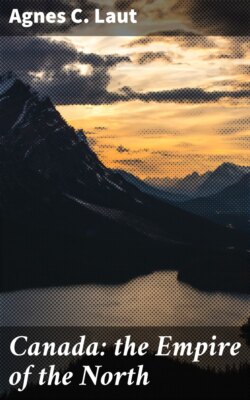Читать книгу Canada: the Empire of the North - Agnes C. Laut - Страница 12
На сайте Литреса книга снята с продажи.
FROM 1000 TO 1600
ОглавлениеTable of Contents
Early voyages to America—Voyages of the Cabots—The French fisher folk—Cartier's first voyage—Cartier's second voyage—Cartier's third voyage—Marguerite Roberval
Who first found Canada? As many legends surround the beginnings of empire in the North as cling to the story of early Rome.
When Leif, son of Earl Eric, the Red, came down from Greenland with his Viking crew, which of his bearded seamen in Arctic furs leaned over the dragon prow for sight of the lone new land, fresh as if washed by the dews of earth's first morning? Was it Thorwald, Leif's brother, or the mother of Snorri, first white child born in America, who caught first glimpse through the flying spray of Labrador's domed hills—"Helluland, place of slaty rocks"; and of Nova Scotia's wooded meadows—"Markland"; and Rhode Island's broken vine-clad shore—"Vinland"? The question cannot be answered. All is as misty concerning that Viking voyage as the legends of old Norse gods.
Leif, the Lucky, son of Earl Eric, the outlaw, coasts back to Greenland with his bold sea-rovers. This was in the year 1000.
For ten years they came riding southward in their rude-planked ships of the dragon prow, those Norse adventurers; and Thorwald, Leif's brother, is first of the pathfinders in America to lose his life in battle with the "Skraelings" or Indians. Thornstein, another brother, sails south in 1005 with Gudrid, his wife; but a roaring nor'easter tears the piping sails to tatters, and Thornstein dies as his frail craft scuds before the blast. Back comes Gudrid the very next year, with a new husband and a new ship and two hundred colonists to found a kingdom in the "Land of the Vine." At one place they come to rocky islands, where birds flock in such myriads it is impossible to land without trampling nests. Were these the rocky islands famous for birds in the St. Lawrence? On another coast are fields of maize and forests entangled with grapevines. Was this part of modern New England? On Vinland—wherever it was—Gudrid, the Norse woman, disembarks her colonists. All goes well for three years. Fish and fowl are in plenty. Cattle roam knee-deep in pasturage. Indians trade furs for scarlet cloth and the Norsemen dole out their barter in strips narrow as a little finger; but all beasts that roam the wilds are free game to Indian hunters. The cattle begin to disappear, the Indians to lurk armed along the paths to the water springs. The woods are full of danger. Any bush may conceal painted foe. Men as well as cattle lie dead with telltale arrow sticking from a wound. The Norsemen begin to hate these shadowy, lonely, mournful forests. They long for wild winds and trackless seas and open world. Fur-clad, what do they care for the cold? Greenland with its rolling drifts is safer hunting than this forest world. What glory, doomed prisoners between the woods and the sea within the shadow of the great forests and a great fear? The smell of wildwood things, of flower banks, of fern mold, came dank and unwholesome to these men. Their nostrils were for the whiff of the sea; and every sunset tipped the waves with fire where they longed to sail. And the shadow of the fear fell on Gudrid. Ordering the vessels loaded with timber good for masts and with wealth of furs, she gathered up her people and led them from the "Land of the Vine" back to Greenland.
